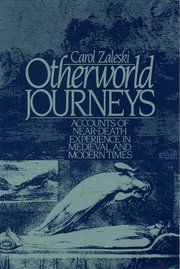Near-Death Experiences Are More Real Than Some of the Research
At Scientific American, we learn of an analysis that tries to link them to recreational drug highs, based only on language useA provocative essay at Scientific American reports on recent research that purports to shed new light on the nature of near-death experiences:
Researchers] compared the stories of 625 individuals who reported NDEs with the stories of more than 15,000 individuals who had taken one of 165 different psychoactive drugs. When those stories were linguistically analyzed, similarities were found between recollections of near-death and drug experiences for those who had taken a specific class of drug. One drug in particular, ketamine, led to experiences very similar to NDE. This may mean that the near-death experience may reflect changes in the same chemical system in the brain that is targeted by drugs like ketamine.
Robert Martone, “New Clues Found in Understanding Near-Death Experiences” at Scientific American
In reality, it’s hardly a pathbreaker. The researchers merely did a linguistic analysis of reports by people who had experienced NDEs and people who had experienced “trips” on mind-altering drugs. Because the two groups used the same words to describe their experiences, the researchers inferred that both experiences had the same cause — the secretion of neurotransmitters (especially ketamine) during the event and their consequent effects on perception, emotion, memory, etc.

The conclusion drawn by the researchers — and Martone — that similar descriptive language implies common causation — is preposterous. Near-death experiences are a reasonably coherent and consistent set of experiences reported by many people who have experienced cardiac arrest or other near-death situations and have been resuscitated. However, as Carol Zaleski points out in her superb book Otherworld Journeys: Accounts of Near-Death Experience in Medieval and Modern Times, (Oxford University Press, 1987), NDE’s are merely the modern iteration of spiritual experiences reported across cultures and across millennia.
Many of these “otherworld journeys”, as Zaleski calls them, are not evoked by near-death or by any trauma at all. Many occur during prayer, worship, and meditation, without any of the biological stressors that would occasion the release of pathological amounts of neurotransmitters. Furthermore, at least 20% of NDE’s are corroborated, which means that the person has perceptions or insights during period of cardiac arrest that they could not have had via ordinary experience. Martone shows no familiarity with the large body of research on this topic.
The scientific “method” of inferring a common biological cause of the experiences by analyzing the language used to describe them is junk science. One may as well infer that lung cancer and tuberculosis have a common cause because sufferers from both diseases report cough, shortness of breath, chest pain, and weight loss.
What kind of scientific inferences are reliable, when studying NDE’s? It’s worth noting that scientists faced a similar question during the development of the germ theory of infectious disease in the 19th century. The critical question was, “How can we know that a specific organism causes a specific infection?” It wasn’t as simple as we might think today. Bacterial cultures from patients with infections may simply be coincidental to the infection.
To address this problem, microbiologist Robert Koch (1843–1910) and his colleagues developed a rigorous set of criteria (Koch’s postulates) by which we can infer that a microorganism is the cause of a disease:
– The microorganism must be found in abundance in all organisms suffering from the disease, but should not be found in healthy organisms.
– The microorganism must be isolated from a diseased organism and grown in pure culture.
– The cultured microorganism should cause disease when introduced into a healthy organism.
-The microorganism must be reisolated from the inoculated, diseased experimental host and identified as being identical to the original specific causative agent.
Koch’s postulates have been supplanted today by even more rigorous standards (the Bradford Hill criteria). Establishing causation in medicine is a complex and subtle matter—but it’s fair to say that ‘linguistic analysis’ has never been a credible guide to scientific inference.
The real science of NDE’s is fascinating, and there are strong reasons to infer that some of the experiences are genuine perceptions and cognition that occur during the cessation of brain activity. Junk science of the sort that Martone cites is an effort to explain away, rather than to explain, near-death experiences. And that will hardly help anyone involved.
Also by Michael Egnor on the immateriality of the mind:
What is abstract thought?, Part I: A Reply to Dr. Ali Abstract thoughts cannot arise from material things because a cause cannot give what it does not have. Dr. Ali’s deeper fallacy — deeper than his misunderstanding of the research — is his belief that mere complexity of material processes is sufficient to explain immaterial processes.
Can materialism explain abstract thought? Part II Now Dr. Ali argues with Dr. Ali
Four researchers whose work sheds light on the reality of the mind The brain can be cut in half, but the intellect and will cannot. The intellect and will are metaphysically simple
and
Materialism is an intellectual trap, out of which neuroscience needs to climb. Neurologist Steven Novella refutes himself. He first asserts that everything he knows is an illusion. Then he insists that his illusions slap him in the face with reality.
Featured image: Courtesy Andrew Charney at Unsplash
